Research helps Dartmouth confront the ties to slavery in its past
| Published: 09-09-2019 12:42 PM |
HANOVER — In 1776, the year the United States declared its independence, the Rev. Eleazar Wheelock wrote a letter to discuss purchasing two items: a wheel of cheese and a human being.
“I understand the money must be paid down for the cheese,” wrote the founder and first president of Dartmouth College. “And as to the Negro, I don’t know when I shall be able to pay for him.”
College archivist Peter Carini has cataloged more than 30 items in Dartmouth’s archives documenting Wheelock’s involvement with slavery, including his will leaving slaves to his son, a yellowed account book noting the half-day rental of two slaves to pick turnips, and the 1776 letter.
“The idea of casually discussing the purchase an inanimate object — a wheel of cheese — and the purchase of a person in the same breath feels deeply discordant, and just plain wrong,” Carini says in an introduction to an episode of the Dartmouth history podcast, Hindsight is 20/19. “It also brings up questions about the responsibilities the college has in terms of acknowledging its ties to slavery, and the legacy of slavery in Hanover and the Upper Valley.”
As part of its 250th anniversary, Dartmouth is highlighting some efforts to grapple with its historical ties to slavery, including an undergraduate course and a public symposium. While other academic institutions such as Brown University have engaged in high-profile, institutional examinations of their involvement with slavery, Dartmouth is taking a more decentralized path as it weighs the legacy of figures like Wheelock.
At the time of Dartmouth’s founding, slavery was relatively common in the northern colonies, with ministers and doctors owning one or two enslaved people. Wheelock, a Congregational minister, was unusual in that he owned at least 19 slaves during his lifetime.
In Hanover, Wheelock likely used slaves to cut down massive pine trees and to build living quarters, according to Carini.
Carini got to know Wheelock through extensive readings of his account books and personal letters, and he calls him complicated.
Article continues after...
Yesterday's Most Read Articles
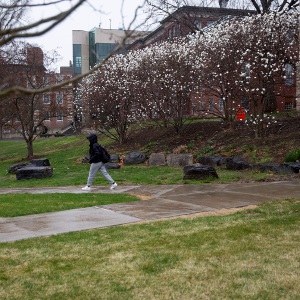 Zantop daughter: ‘I wish James' family the best and hope that they are able to heal’
Zantop daughter: ‘I wish James' family the best and hope that they are able to heal’
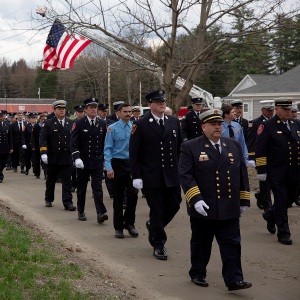 Crowd turns out to honor late Ascutney Fire Chief Darrin Spaulding
Crowd turns out to honor late Ascutney Fire Chief Darrin Spaulding
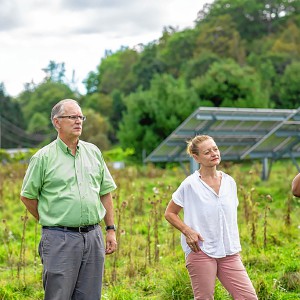 A Life: For Kevin Jones ‘everything was geared toward helping other people succeed’
A Life: For Kevin Jones ‘everything was geared toward helping other people succeed’
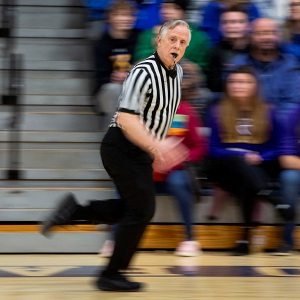 Pick a sport and Pete DePalo’s has probably officiated it over the past 40-plus years
Pick a sport and Pete DePalo’s has probably officiated it over the past 40-plus years
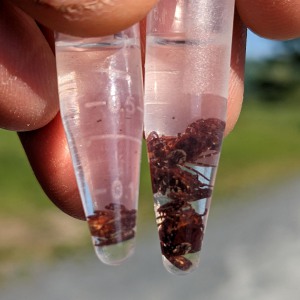 Out & About: Vermont Center for Ecostudies continues Backyard Tick Project
Out & About: Vermont Center for Ecostudies continues Backyard Tick Project
“He’s not my style of person,” he said, noting that the college’s first president could play people off each other in the pursuit of his goals. “But he’s also trying very hard to do things right.”
Like any of us, Carini said, Wheelock isn’t purely good or evil, and our understanding of his true character remains incomplete.
“If someone only had my emails and bank account, what kind of person would I look like?” Carini asked.
Jere Daniell, professor emeritus of history at Dartmouth, says a historian shouldn’t even ask whether something in the past is good or bad, but rather strive to explain how it happened.
“When you go into the past, you don’t know the language,” he said. “As a historian, you are as clear as you can be about the subject, and you dive in and see what you find.”
It’s no coincidence that many schools like Dartmouth are uncovering ties to slavery. According to MIT professor Craig Steven Wilder and author of the book, Ebony and Ivy: Race, Slavery, and the Troubled History of America’s Universities, slavery unlocked enormous wealth for colonial academies.
Merchants who grew rich in the slave trade became donors and trustees, while slave labor — gathering firewood, washing clothes, cooking, cleaning — could mean the difference between success and failure for an academic institution.
“In short, American colleges were not innocent or passive beneficiaries of conquest and colonial slavery,” writes Wilder, who previously taught at Dartmouth. “Human slavery was the precondition for the rise of higher education in the Americas.”
The idea for sociology professor Deborah King’s undergraduate course, “Lest We Forget: History, Collective Memory, and Slavery at Dartmouth,” came in the wake of Brown University’s landmark report on its historical ties to slavery. The assumption was that Dartmouth wasn’t comparable to Brown because it was situated away from port cities and the slave trade.
King found that “curious” and dug into researching slavery at Dartmouth and in the Upper Valley. She notes that, while our images of slavery are associated with southern plantations, we tend to overlook the subtle ways slavery was woven into northern life.
“The connections are there, but they don’t sort of fit the images of what slavery looks like in the United States,” she said.
One story that interests her is that of Jane Wentworth, who was born into slavery in Hanover in the late 1770s, emancipated a few years later, and wound up working as a custodian, washerwoman and nurse at Dartmouth for more than 40 years. A son and grandson later served with the Massachusetts 54th Volunteer Infantry, the regiment of black Civil War soldiers made famous by Augustus Saint-Gaudens’ Shaw Memorial and the movie Glory.
Wentworth, who died in 1850 at age 71, is buried in the Dartmouth Cemetery in the heart of campus.
This fall will mark the third time King has taught her course. Previous sessions focused on Nathan Lord, Dartmouth’s president at the start of the Civil War, who went from being an abolitionist to a slavery apologist and was forced to resign; and Daniel Webster, the statesman, orator and famous Dartmouth graduate whose reputation was tarnished by his support of the Fugitive Slave Act.
“Their initial reaction is, let’s condemn Daniel Webster,” said King of her students. But she points out that by reading the primary documents of the time, we come to understand Webster was motivated by his concern for private property and especially in preserving the union. “That took precedence. That was the priority in his thinking.”
While this year’s course will explore Dartmouth’s economic ties with slavery — such as whether timber from Dartmouth’s land grants was used in slave ships and were there donors and trustees who funded Dartmouth with profits from the slave trade — all of King’s courses demand intensive research work in the archives and wrestling with human contradictions.
“Part of my goal in teaching is always to complicate, to complicate, to complicate,” King said. “If you are attempting to understand social context and social dynamics and processes, and you come up with simple, comfortable answers, then you really don’t understand what’s going on.”
King also will be working with Carini and her students on an exhibition to open at Rauner early next year, as well as a public symposium this fall exploring slavery at Dartmouth and the Upper Valley.
“This is my swan song to Dartmouth,” said King, who plans to retire within the next couple of years. King hopes others will take up her research, but she understands the subject can seem threatening.
“Whenever slavery is brought up, it’s such a flashpoint, regardless of context,” King said. When courses such as hers are taught, there’s often negative reactions because some people assume the purpose is to tear down the institutions being studied.
But minds can change. Last fall, when some of King’s students were conducting a walking tour of Dartmouth sites connected to slavery, such as Daniel Webster’s cottage and where the first campus building was constructed, several alumni quietly joined.
Afterward, one alumnus said he had expected the tour to be “a polemic and an attack on Dartmouth.”
Instead, reported King, “he was surprised, and pleasantly so, at the extensive research, the nuanced analysis, that the students were engaged in.”
While King is proud of the work she and archivists including Carini have done to explore Dartmouth’s ties to slavery, she’d like Dartmouth to do more at the institutional level. She recognizes the funding and structural challenges involved, but King points out that other schools have established policy centers, started programs, or memorialized enslaved people.
“There are tremendous, exciting things that (other) institutions are engaged in,” she said.
Christianne Hardy, special assistant to Dartmouth President Phil Hanlon, says the focus of the school’s 250th is looking forward.
“We do still need to have a reckoning with the role of slavery in how it affects Dartmouth, but even more specifically, how does it affect our African American students, how does it affect their ability to be fully functional students here?” she said.
Hardy explained that Dartmouth is committed to its inclusive excellence program, which promotes diversity on campus through six initiatives, one of which is confronting and learning from the college’s past.
“We need to be honest with it,” Hardy said. “It doesn’t serve anyone’s interest to ignore it.”
While other schools have established commissions or written probing reports on their history with slavery, Hardy said Dartmouth is better served by an ongoing process of inquiry that continually adjusts as new information is learned.
That includes the historical accountability program, a series of student fellows researching histories of marginalized groups, inviting speakers to campus, and working with diverse alumni groups to tell their stories.
“We don’t want to be the owners of the truth,” Hardy said.
Hardy hopes Dartmouth can learn from all of its past in order to create an environment where everyone can feel safe and included, and no people are ignored. “Our policies need to be predicated on a broader goal of inclusivity than just rectifying past wrongs of specific groups,” she said.
Fifty years ago, during Dartmouth’s bicentennial, the college did focus on one group. Though Dartmouth’s charter issued to Wheelock by the Royal Governor of New Hampshire John Wentworth in the name of King George III specifically called for the education of Native American students, the school had not lived up to its promise. Since recommitting to this founding principle, over 700 Native Americans have attended Dartmouth, more than the rest of the Ivy League combined.
“That was a pretty successful initiative,” said Hardy, who noted Dartmouth continues to expand its Native American Program with a new professor and an expanded role in studying global issues.
As Dartmouth celebrates its 250th anniversary, the Black Alumni of Dartmouth Association is gearing up to mark its 50th in 2022. The group has begun collecting stories, documents and materials that illustrate the black experience at Dartmouth, both before and after the end of slavery.
“We’re talking about 250 years of history,” said Karim D. Marshall, BADA president. “We can’t just stop at the Civil War.”
Marshall, who graduated from Dartmouth in 2003 and works as a lawyer in Washington, D.C., recognizes these are difficult issues, and it can be challenging for an institution like Dartmouth to talk about them.
“The only way to really deal with it is to deal with it head-on,” he said.
Marshall said that many of BADA’s older members are at an age where it’s critical to preserve the stories of what they went through to access their education. BADA is working with the college to create a living repository that will be accessible to the public, but Marshall hopes this is just part of Dartmouth’s efforts to come to terms with its past as it moves into the future.
“There’s no story that’s 100% positive,” Marshall said of BADA’s project. “It’s got its great parts, it’s got its horrible parts,” but telling the whole story remains the goal.
Matt Golec can be reached at mattgolec@gmail.com.

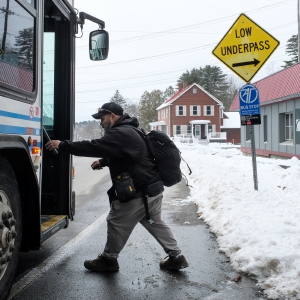 Upper Valley winter shelters kept dozens warm and dry
Upper Valley winter shelters kept dozens warm and dry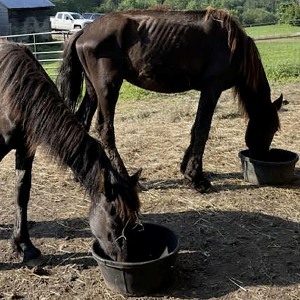 Owner of Friesian horse facility ordered to pay care costs for seized animals
Owner of Friesian horse facility ordered to pay care costs for seized animals
